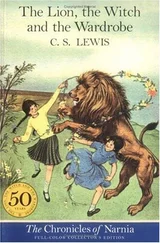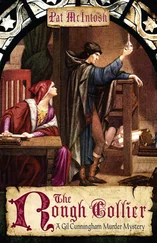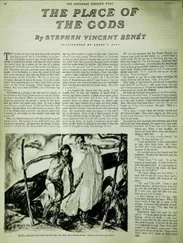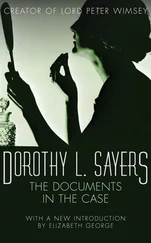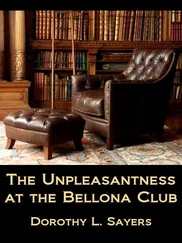Periods of Assyrian Dominance (B.C.)
Old Assyrian Period
1869–1837
Middle Assyrian Period
1350–1000
Neo-Assyrian Period
883–612
Assyrian Kings, 722–609 B.C.
Sargon II
722–705
Sennacherib
705–681
Esarhaddon
c. 681–669
Ashurbanipal
c. 669–627
Ashur-etil-ilani
c. 631–627
Sîn-shar-iskkun
c. 627–612
Ashur-uballit II
c. 612–609
BABYLONIANS
Babylonians were also Semitic speakers; their name is derived from Babylon, where the kings resided. At its height the Babylonian empire controlled territory stretching from modern-day Egypt to Iran. The sixth king of Babylon, Hammurabi, developed the first code of law. Other achievements included advances in architecture, mathematics, astronomy, and astrology. Babylonians introduced the zodiac, and a Babylonian, Seleucus of Selecucia, may have been the first to propose the heliocentric model of astronomy, describing the earth and planets as revolving around the sun.
Periods of Babylonian Dominance (B.C.)
Old Babylonian Period
1950–1651
Middle Babylonian Period
1651–1157
Neo-Babylonian Period
625–539
Notes
Prologue
1 The Gods have abandoned us: Alex Whitaker (trans.), Sumerian Home Page, www.ancient-wisdom.co.uk/iraqur.htm. “The Lamentation over the Destruction of Ur” was originally translated by Samuel Noah Kramer, 1940, University of Chicago.
Chapter 4
34 Bruce Springsteen was headlining: Crawdaddy! February 2005. From the Kenny’s Castaways website describing a Bruce Springsteen performance at the pub.
Chapter 8
82 Every stone in it has been soaked in blood: Lieutenant-General George Molesworth, Afghanistan, 1919: An Account of Operations in the Third Afghan War (London and New York: Asia Publishing House, 1962).
Chapter 11
120 As to Hezekiah, the Judahite: Israel Finkelstein and Neil Asher Silberman, The Bible Unearthed: Archaeology’s New Vision of Ancient Israel and the Origin of Sacred Texts (New York: Simon & Schuster, 2002), 260.
122 Ashurbanipal had beheaded: H.W.F. Saggs, The Might That Was Assyria (London: Sidgwick & Jackson, 1984), 113.
122 Whosoever shall carry off: Sir Ernest Alfred Wallis Budge, The Babylonian Story of the Deluge and the Epic of Gilgamesh with an Account of the Royal Libraries at Nineveh (London: British Museum Dept. of Egyptian and Assyrian Antiquities, 1920).
123 The Book of the Vision of Nahum the Elkoshite: Nahum 2–3 (Jewish Publication Society Bible, 1917).
Chapter 13
145 That which is below: Adam McLean, “The Emerald Tablet of Hermes,” The Alchemy Web Site, www.levity.com/alchemy/ emerald.html.
147 It is we who through our glance: Michael Baigent and Richard Leigh, The Elixir and the Stone (London: Random House, 1997), 19–26.
147 As a humorous aside, our own King John of England: Ibid., 70–71.
148 The bell, for example, represents the correspondence: Ibid., 62.
Chapter 20
200 Who wrote Mutus Liber ?: Adam McLean, The Alchemy Web Site, www.levity.com/alchemy.
Chapter 21
208 The Judean Hebrew people of that time: Israel Finkelstein and Neil Asher Silberman, The Bible Unearthed: Archaeology’s New Vision of Ancient Israel and the Origin of Sacred Texts (New York: Simon & Schuster, 2002), 153–54.
211 The Book of Nahum was not a prophecy but an eyewitness account: Laurel Lanner, Who Will Lament Her? The Feminine and the Fantastic in the Book of Nahum (New York: T&T Clark, 2006), 7.
Chapter 25
239 Upon the eleventh day: Brookes More (trans.), Metamorphoses (Books 1–5) (Boston: Cornhill, 1922), 19.
Chapter 34
325 And the queen is uncovered: Nahum 2:8 (Jewish Publication Society Bible, 1917).
326 Take ye the spoil of silver: Ibid.
326 Where is the den of lions: Ibid.
327 This is a place where the lions walk: Ibid.
Chapter 36
344 And the woman was arrayed: Revelation 17:4 (King James Study Bible).
349 And the beast: Revelation 13:2 (King James Study Bible).
Bibliography
The following books, newspaper articles, and websites have been instrumental to my research. I recommend them all as fascinating reads.
Books
Baigent, Michael, and Richard Leigh. The Elixir and the Stone . London: Random House, 1997.
Black, Jeremy, and Anthony Green; illustrations by Tessa Rickards. Gods, Demons and Symbols of Ancient Mesopotamia: An Illustrated Dictionary. Austin: University of Texas Press, 2003.
Blech, Benjamin, and Roy Doliner. The Sistine Secrets: Michelangelo’s Forbidden Messages in the Heart of the Vatican. New York: HarperCollins, 2009.
Bogdanos, Matthew, with William Patrick. Thieves of Baghdad. New York: Bloomsbury, 2005.
Finkelstein, Israel, and Neil Asher Silberman. The Bible Unearthed : Archaeology’s New Vision of Ancient Israel and the Origin of Sacred Texts. New York: Simon & Schuster, 2002.
García Martínez, Florentino. The Dead Sea Scrolls Translated: The Qumran Texts in English. Translated by W.G.E. Watson. Leiden, the Netherlands: E.J. Brill, 1996.
George, Donny, Micah Goren, and Marie Hélène Carleton. The Looting of the Iraq Museum, Baghdad. New York: Harry N. Abrams, 2005.
Grimal, Pierre. Dictionary of Classical Mythology. Edited by Stephen Kershaw from the translation by A.R. Maxwell-Hyslop. London: Penguin Group, 1991.
Hedges, Chris, and Laila Al-Arian. Collateral Damage: America’s War Against Iraqi Civilians. New York: Nation Books, 2008.
Hersh, Seymour M. Chain of Command: The Road from 9/11 to Abu Ghraib. New York: HarperCollins, 2004.
Kuhrt, Amelie. The Ancient Near East. London: Routledge, 1995.
Lanner, Laurel. Who Will Lament Her? The Feminine and the Fantastic in the Book of Nahum. New York: T&T Clark, 2006.
More, Brookes, trans. Metamorphoses (Books 1–5). Boston: Cornhill, 1922.
Rhea Nemet-Nejat, Karen. Daily Life in Mesopotamia. Westport, CT; London: Greenwood Press, 1998.
Scaggs, H.W. The Might That Was Assyria . London: Sidgwick & Jackson, 1984.
Wallis Budge, E.A. The Babylonian Story of the Deluge as Told by Assyrian Tablets from Nineveh. London: British Museum, 1920.
Wayland Barber, Elizabeth, and Paul T. Barber. When They Severed Earth from Sky: How the Human Mind Shapes Myth. Princeton, NJ: Princeton University Press, 2004.
Weidener, Jay, and Vincent Bridges. The Mysteries of the Great Cross of Hendaye, Alchemy and the End of Time. Rochester, VT: Destiny Books, 1999.
Newspaper Articles and Websites
Aprim, Fred. “Alqosh—The Mother of Assyria,” August 22, 2004, www.fredaprim.com/pdfs/2004/Alqosh.pdf.
Asser, Martin. “Baghdad Diary: British Cemetery,” BBC News Online , April 24, 2003, http://news.bbc.co.uk/2/hi/middle_ east/2974111.stm.
Bates, Clair. “Dying to Look Good: French King’s Mistress Killed by Drinking Gold Elixir of Youth,” Mail Online , December 22, 2009, www.dailymail.co.uk/sciencetech/article-1236916/Dying-look-good-French-kings-mistress-killed-gold-elixir-youth.html.
Bogdanos, Colonel Matthew. “U.S. Concludes Investigation of Looting of Iraqi National Museum in Baghdad,” Culture Kiosque Art and Archaeology News , September 25, 2003, www.culturekiosque.com/art/news/baghdadmuseum.html.
Bowser, Jonathon Earl, from an article by Jerry Jeffries, “The Perfection of Number,” The Memorial Website of Jerry Wayne Jeffries , October 27, 2009, www.jerryjeffries.net/jeb7.html.
Читать дальше

